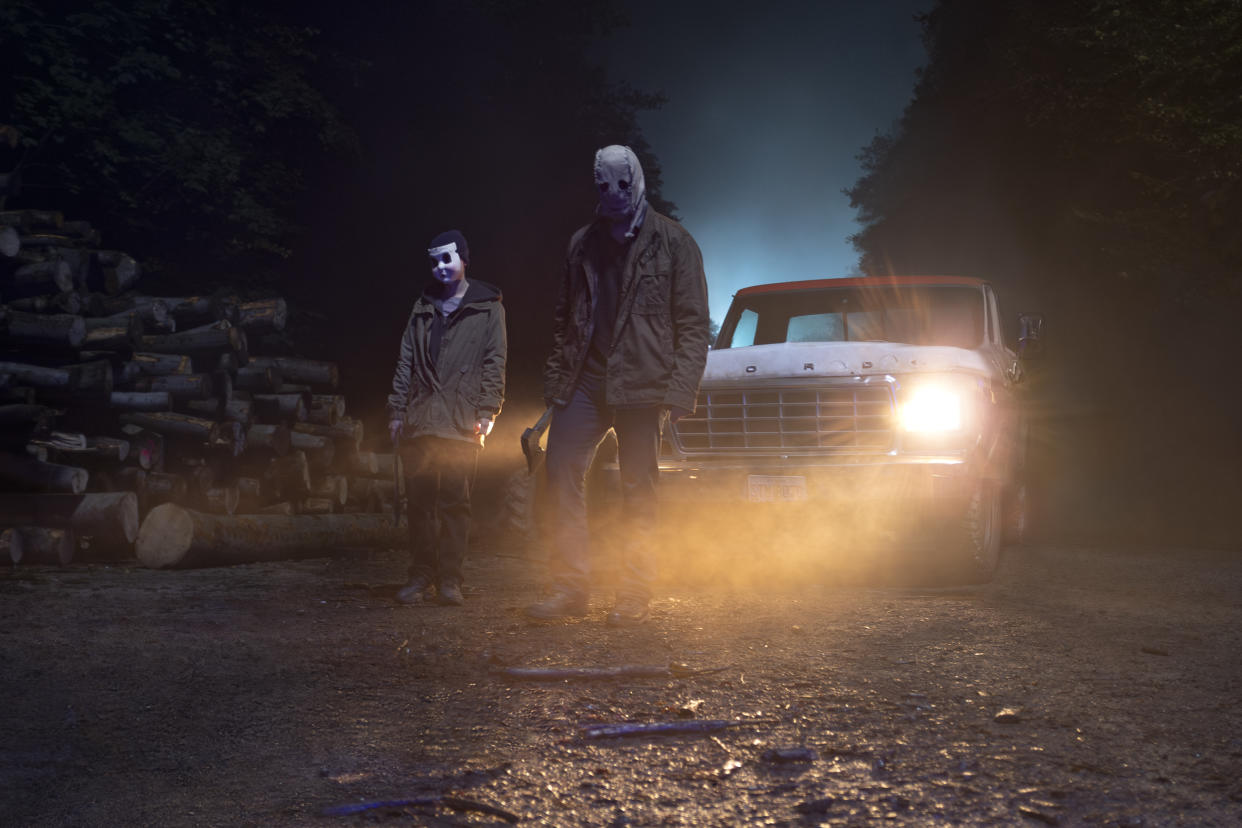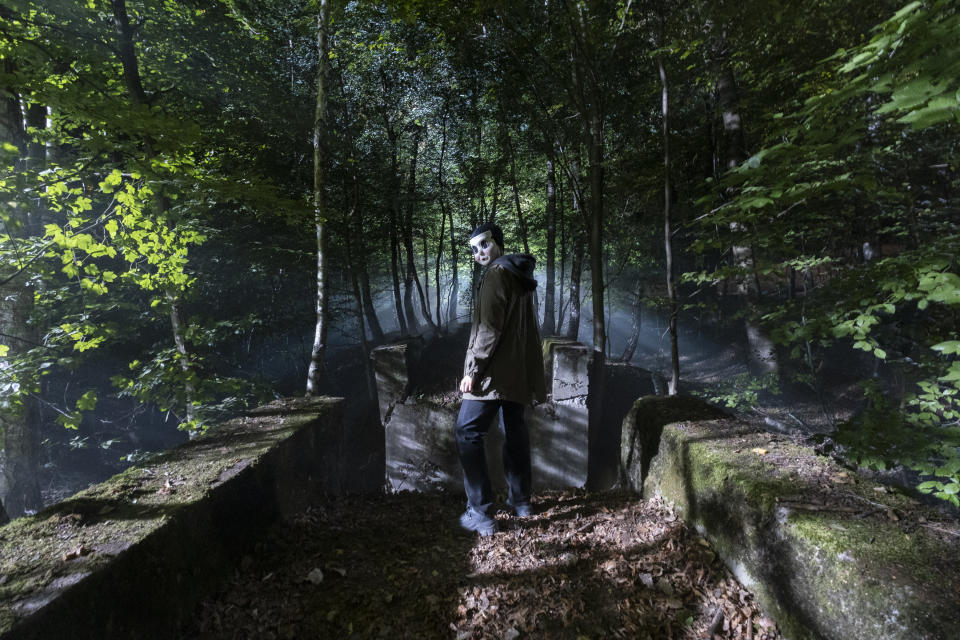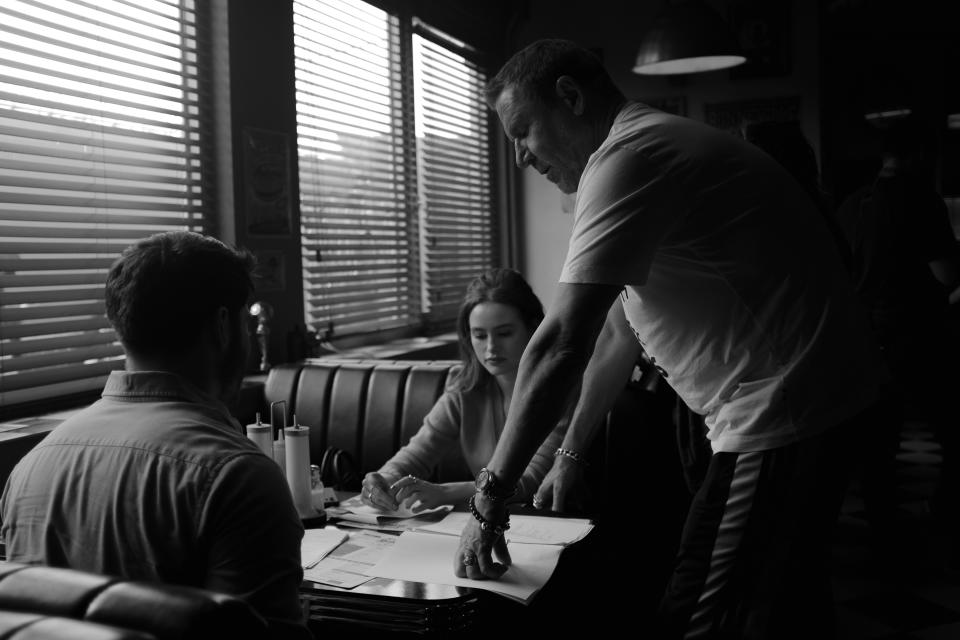‘The Strangers: Chapter 1’ Looked for Maximum Terror in a 10th of a Second

- Oops!Something went wrong.Please try again later.
- Oops!Something went wrong.Please try again later.
- Oops!Something went wrong.Please try again later.
In 1988, director Renny Harlin made a big splash in Hollywood when he directed “A Nightmare on Elm Street 4: The Dream Master,” which at that point was the highest-grossing film in the “Elm Street” series — and would remain so until “Freddy vs. Jason” in 2003. Two years later, Harlin had an even bigger hit with “Die Hard 2,” a movie that several critics at the time (including the two most popular and influential, Roger Ebert and Gene Siskel) considered to be artistically superior to its predecessor. Now Harlin, whose credits also include “Cliffhanger,” “The Long Kiss Goodnight,” and “Deep Blue Sea,” returns to the world of sequels with “The Strangers: Chapter 1,” a sequel to Bryan Bertino’s ultra-creepy 2008 horror film about a brutal home invasion. As with his previous sequels, Harlin has both delivered the satisfactions of his source material and gone in his own new directions, in the process creating the most frightening thriller of 2024 so far.
The director’s overall philosophy about approaching sequels hasn’t changed since Freddy Krueger provided him with his big break 36 years ago. “I’ve had a very strict rule, which is that you want to replicate the experience of the original, but not copy the experience,” Harlin told IndieWire. “That means you keep key characters and situations that the audience likes — in ‘Die Hard 2,’ you have a blue-collar cop who has a wife that he loves, and an environment where you’re not allowed to go anywhere else, a building in the first ‘Die Hard’ and an airport in ‘Die Hard 2’ — but you have to expand on it and make it different. You have to give them certain touchstones so that when they buy a ticket to see ‘Strangers: Chapter 1,’ they get the same freaky feeling of dread the original ‘Strangers’ gave them, but they don’t feel like they’re watching the same movie again.”
More from IndieWire
Harlin’s desire to fill the audience with dread is beautifully fulfilled in “Strangers: Chapter 1,” which establishes a sense of menace in its early moments and then relentlessly escalates the tension with each passing scene. Part of the movie’s impact lies in Harlin’s unerring instincts for knowing when to reveal information and when to leave it up to the audience’s imagination; as his central couple slowly becomes aware that they are under siege in the remote cabin they’ve rented, Harlin skillfully plays with how much less or more we know than the characters — sometimes leaving both them and us unsure of what we’ve seen. “In the end, there is nothing more powerful than the audience’s own imagination,” Harlin said. “I love this genre and trying to find the right angles, the right timing of what to show and what not to show — figuring out how long to stay on a character’s face and make the audience really want to see what they are seeing. You want the audience to be screaming, ‘Look behind you!'”
Harlin sees horror as the spiritual sibling of comedy. “They’re kind of like opposite sides of the same coin,” he said. “In comedy, if you’re telling a joke, you have to set it up, you have to build it up, and you have to pay it off. In horror, you have to give the premise to the audience, lead them down a path, and surprise them in the end. In ‘The Strangers: Chapter 1,’ I didn’t just want to throw cheap jump scares at the audience — I wanted to create a constant feeling of stressful fear and the sense that something bad was about to happen.” One way Harlin did this was to create a layered, detailed sound mix filled with subtle effects that keeps the audience on edge. “Sound and music are key to any movie, but especially when it comes to the horror genre. You can have a person in a room, and sound and music will tell the audience how to feel — whether it’s a safe situation or a threatening situation.”

For “The Strangers: Chapter 1,” Harlin determined that realism should be the guiding principle behind the sound. “This is not something fantastical,” he said. “Very few of us ever go to the castle of Dracula or some crazy haunted house, but we do sometimes go to an Airbnb. It’s important to really put the audience in that situation.” To that end, Harlin guided the sound team to create a creepy environment around the characters. “I wanted the house and the forest to feel like they’re breathing around you. It’s just a subtle feeling that the sound can create with the floorboards, making it a claustrophobic environment. When we go into the forest, there aren’t pretty little birds singing. There’s a weird clunking of tree trunks in the far distance, or footsteps on the forest floor, or maybe one or two birds off in the distance.”
In terms of music, Harlin adopted a “less is more” approach. “Initially, I had a full score pretty much from beginning to end,” he said. “But as I was mixing, I discovered that sometimes it is actually better not to have music. Even if the music is really good and builds the tension, sometimes it gives the audience a get-out-of-jail-free card. Like, ‘Oh, I’m watching a movie so I can relax. It’s just a movie with music.’ But then when you strip the music out and just put the audience there watching a character in a quiet house with nothing else but a little creak and groan, all of a sudden you can’t escape to fantasy. You are there, and you have to face the reality, and it becomes much scarier.” One place where Harlin did find music helpful was on set, where he played music to help convey the tone. “It’s a great way of communicating to the actors what the tempo and feel of the scene is.”

Keeping track of the purpose in each individual scene was key, especially since Harlin was shooting three movies at once; “The Strangers: Part 1” is the first in a trilogy of prequels that Harlin essentially shot as one long movie. “I made emotional charts for every scene,” Harlin said. “I planned exactly where I felt the actors should be emotionally. When you’re shooting a four-and-a-half-hour movie and everything is shot out of order, you have to be very careful to always be mindful of the emotional state of the character so that you don’t end up going too big too soon or too little at a place where you should be absolutely panicked. Any thinking you can do beforehand really gives you and the actors the tools you need when you are on set.”
At this point, Harlin is done with parts one and two and is deep into editing part three, which he says is benefiting from all that he learned about the characters from the first two movies. For him part of the fun is how delicate the editing process is on a horror film. “In a horror movie, a couple seconds is an eternity,” Harlin said. “As we know, every second of film has 24 frames in it, and sometimes the timing of revealing something is a matter of two frames — so we’re talking about a 10th of a second.” For a moment in which an axe comes through a door, Harlin experimented with cuts timed to very specific frames until he achieved the impact he was looking for, just as he had on “Deep Blue Sea” for the now classic moment when Samuel L. Jackson’s character is attacked by a shark mid-speech. “You’re in the editing room splitting hairs, trying this way and that way, and then when you get it right, you just know. You don’t even need sound. It just feels right.”
Best of IndieWire
The 13 Best Thrillers Streaming on Netflix in May, from 'Fair Play' to 'Emily the Criminal'
The Best Father and Son Films: 'The Tree of Life,' 'The Lion King,' and More
The 10 Best Teen Rebellion Films: 'Pump Up the Volume,' 'Heathers,' and More
Sign up for Indiewire's Newsletter. For the latest news, follow us on Facebook, Twitter, and Instagram.

